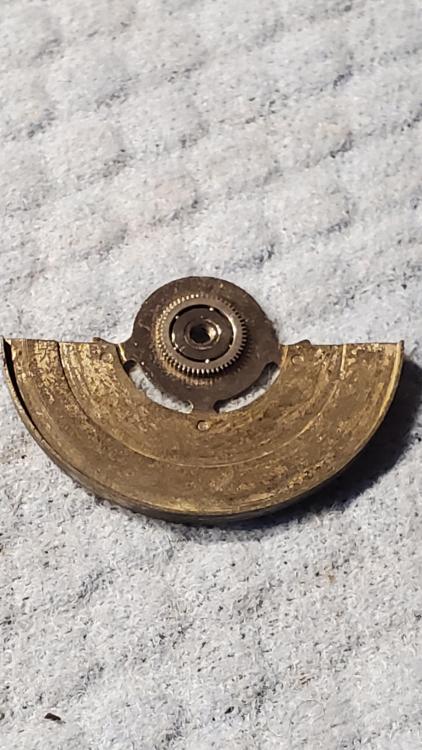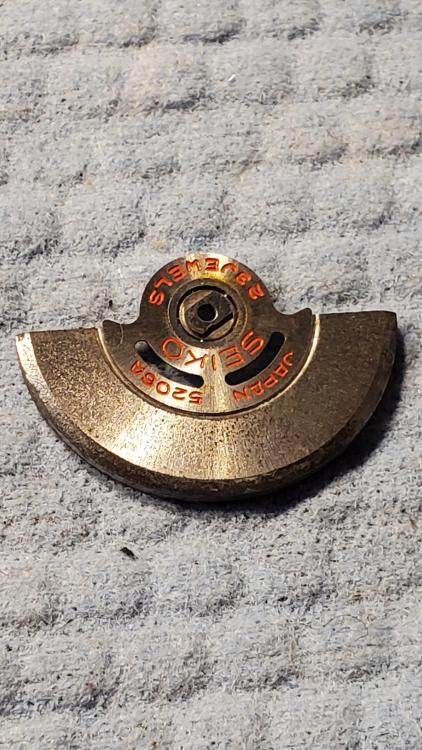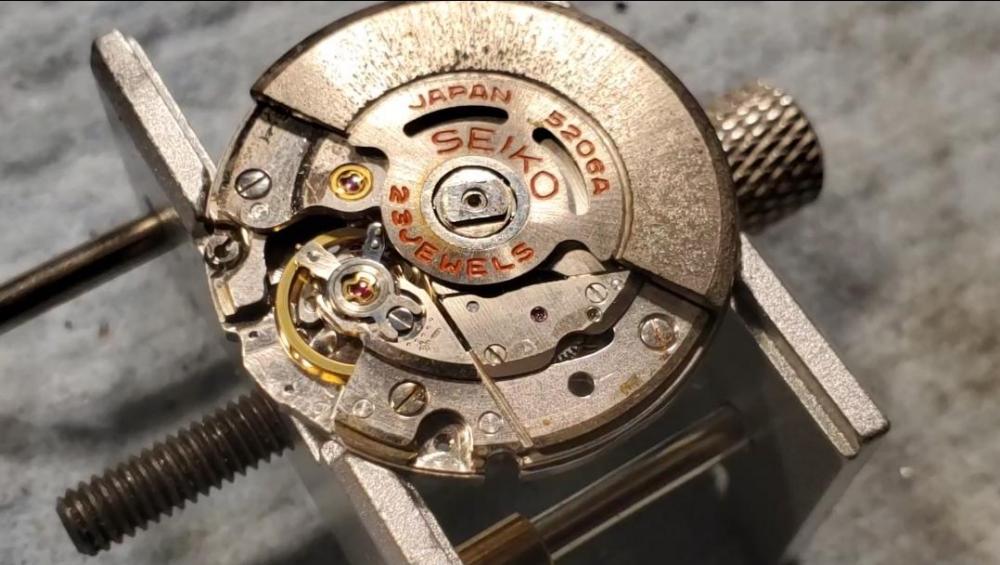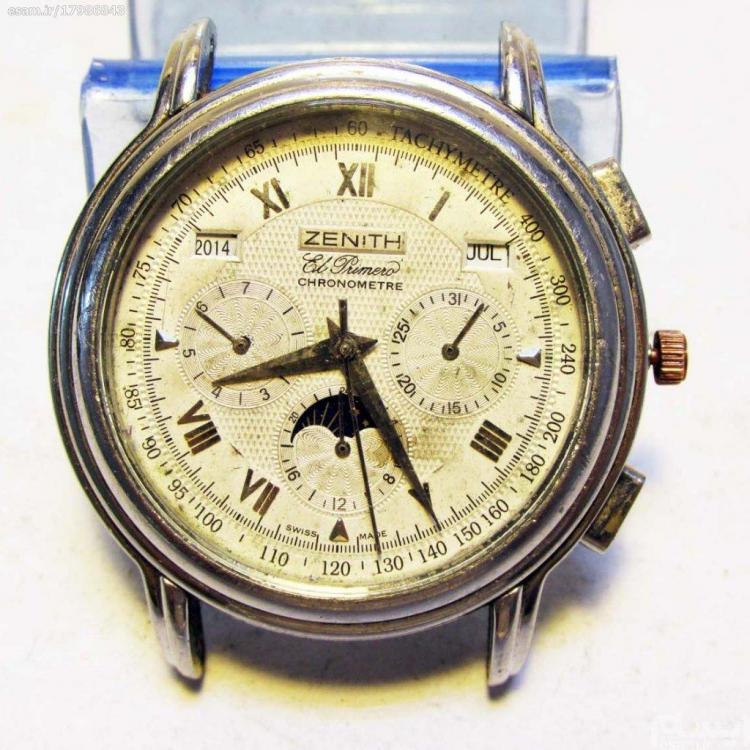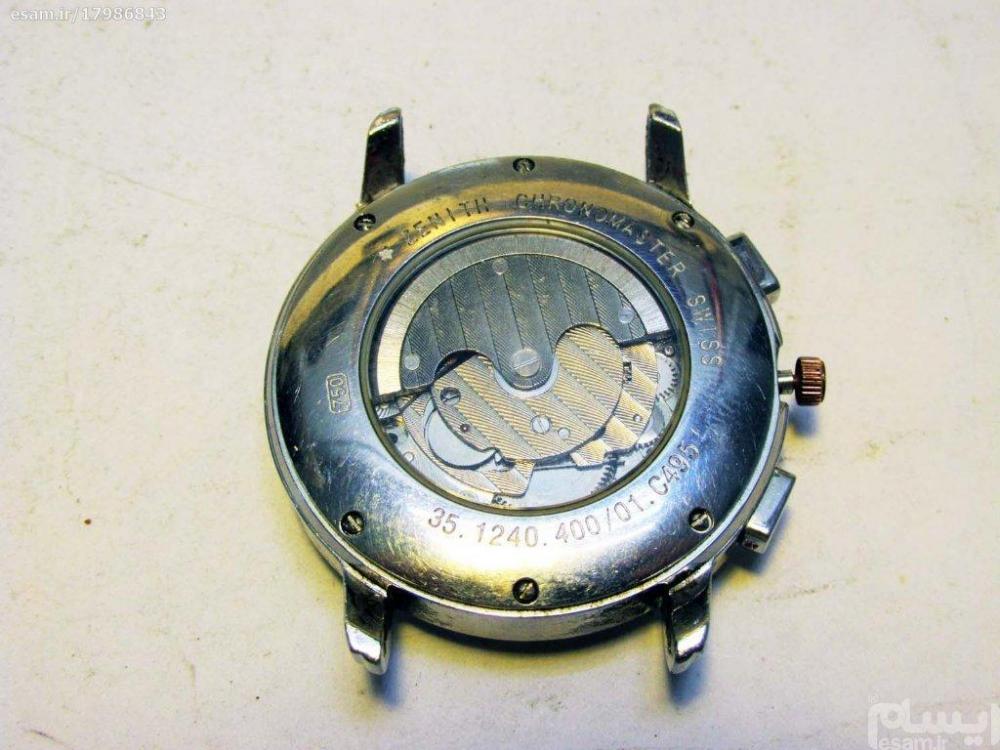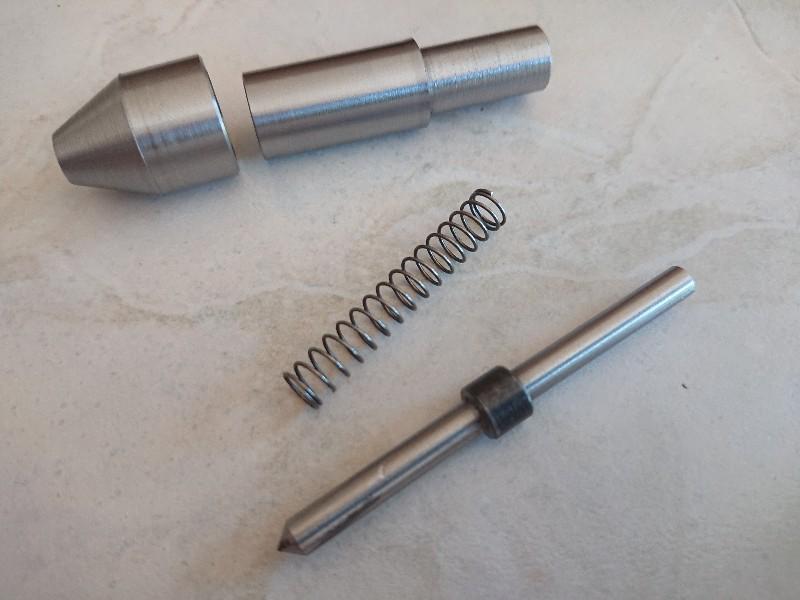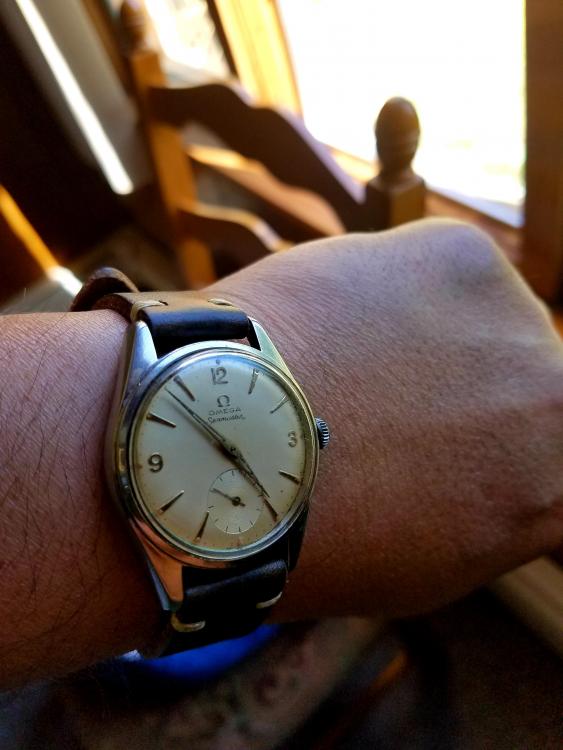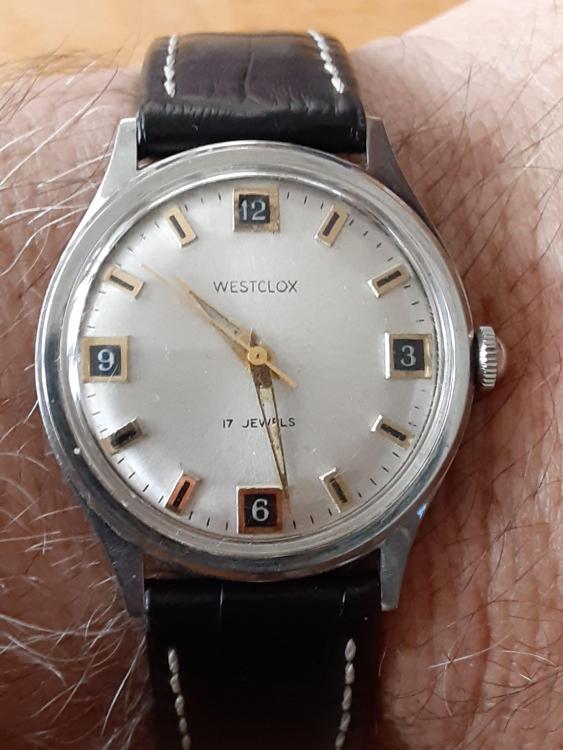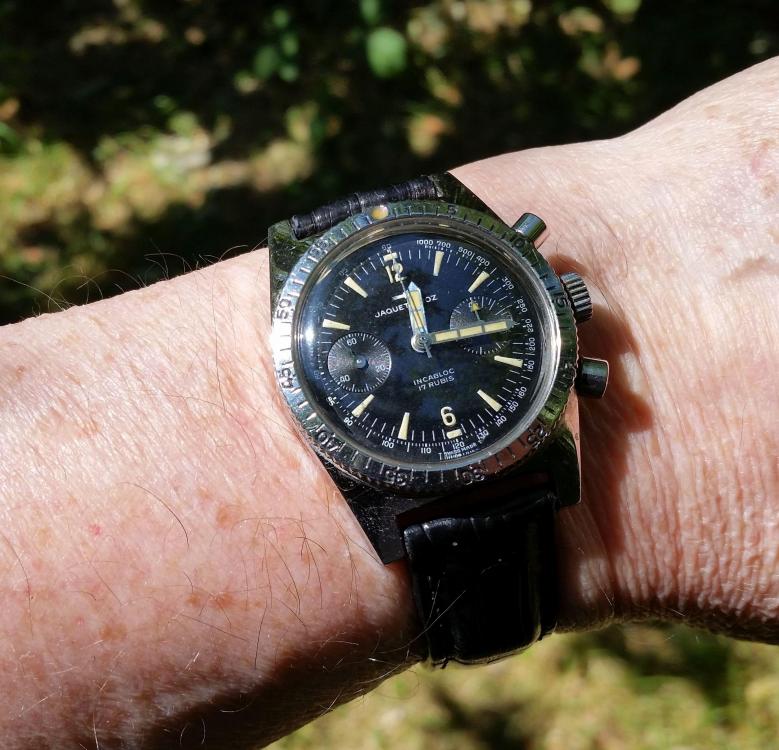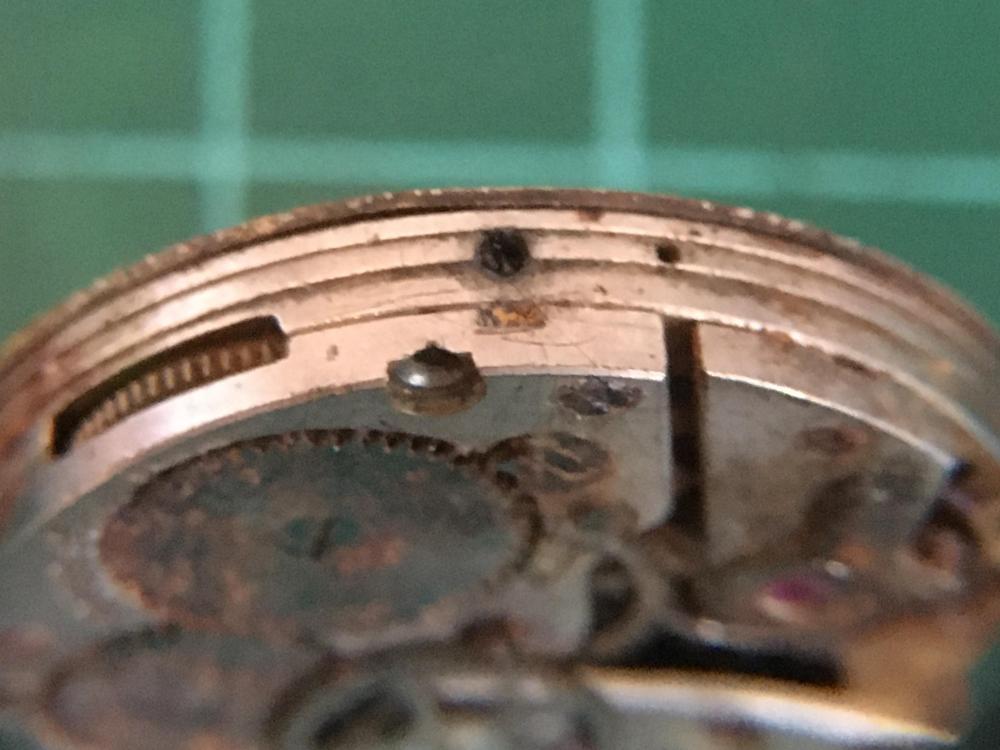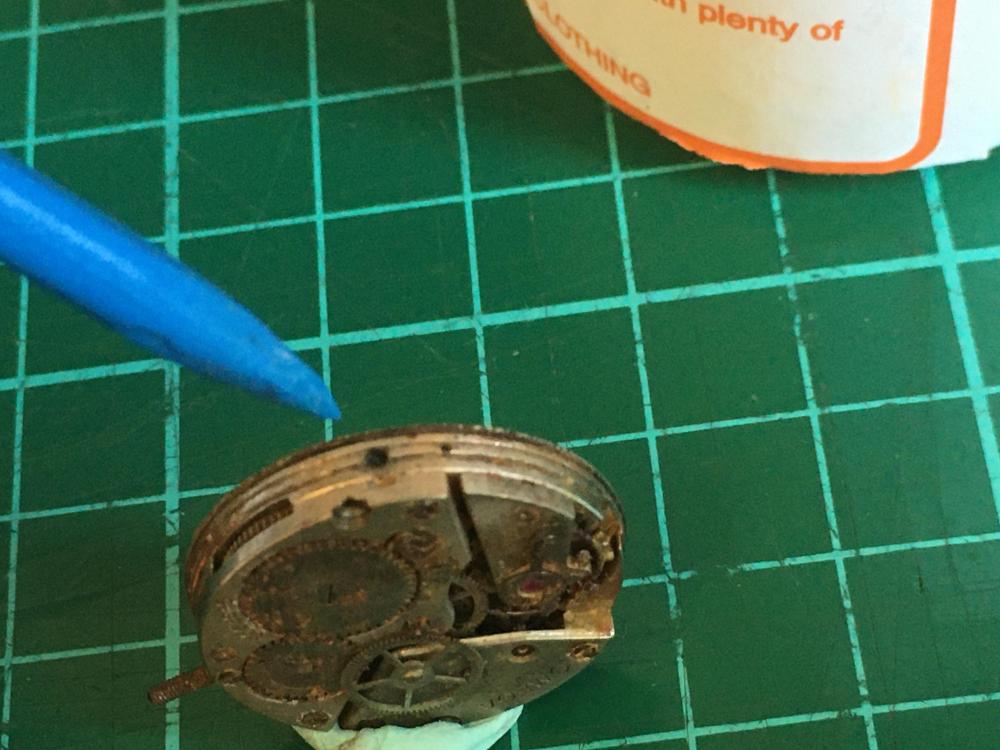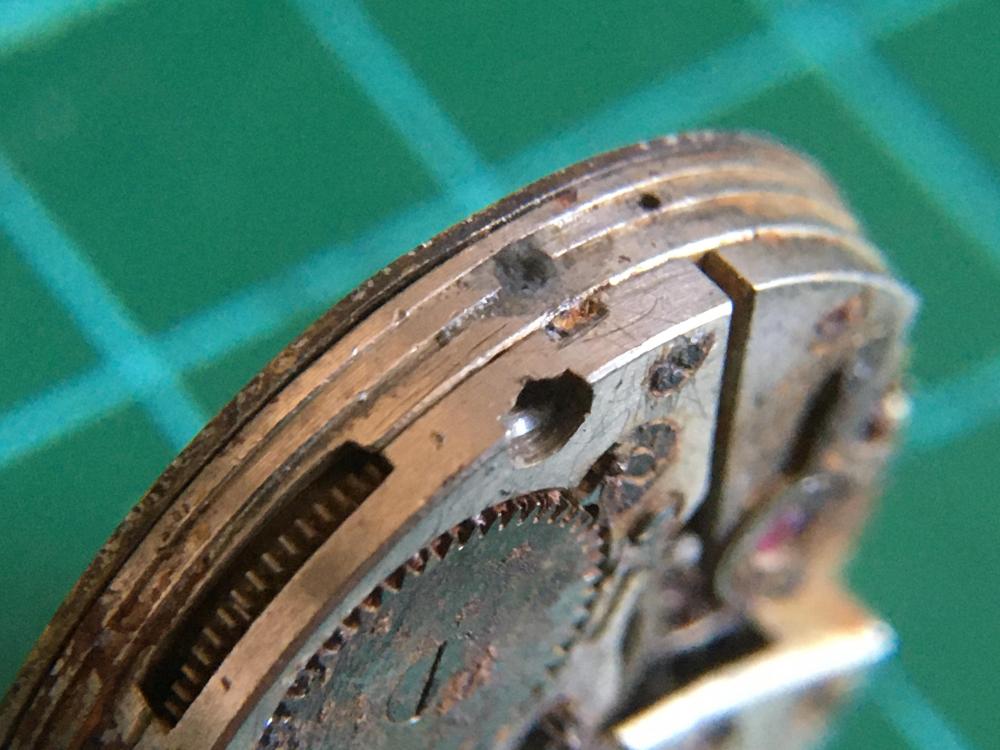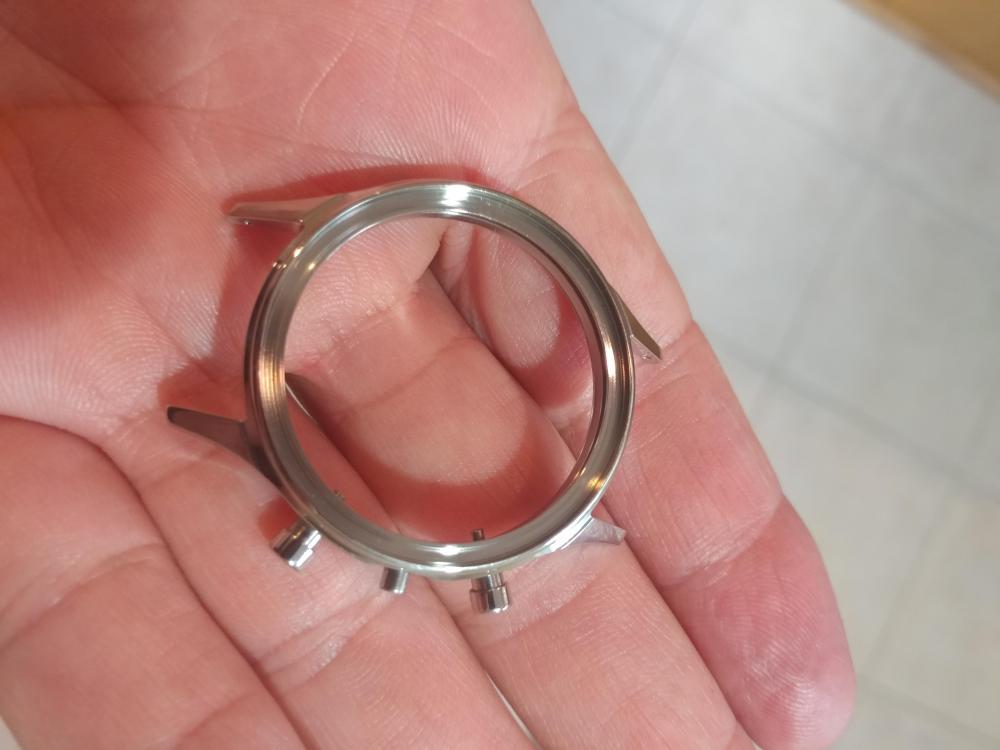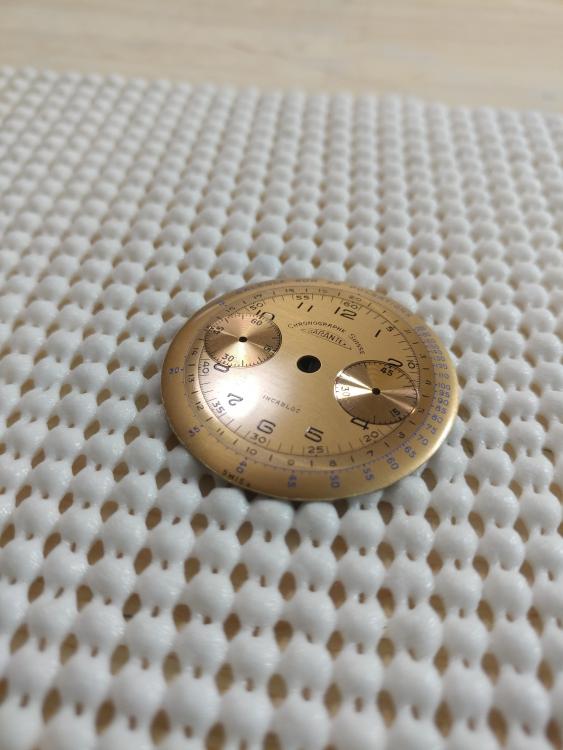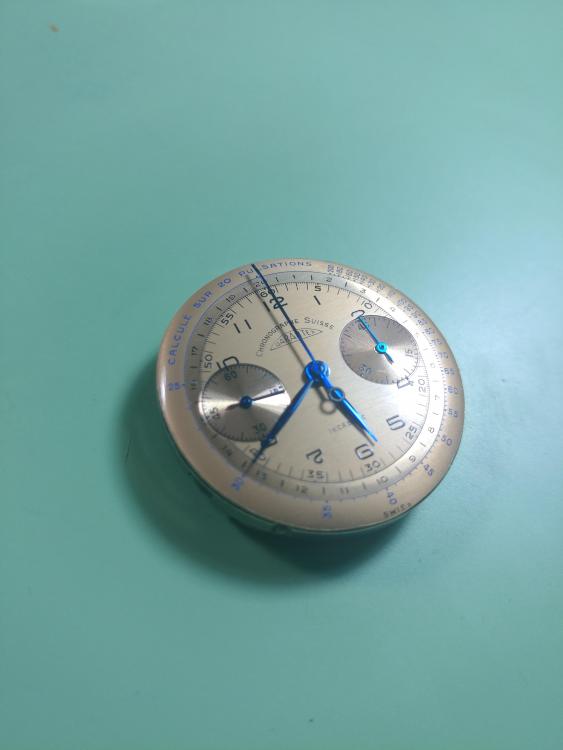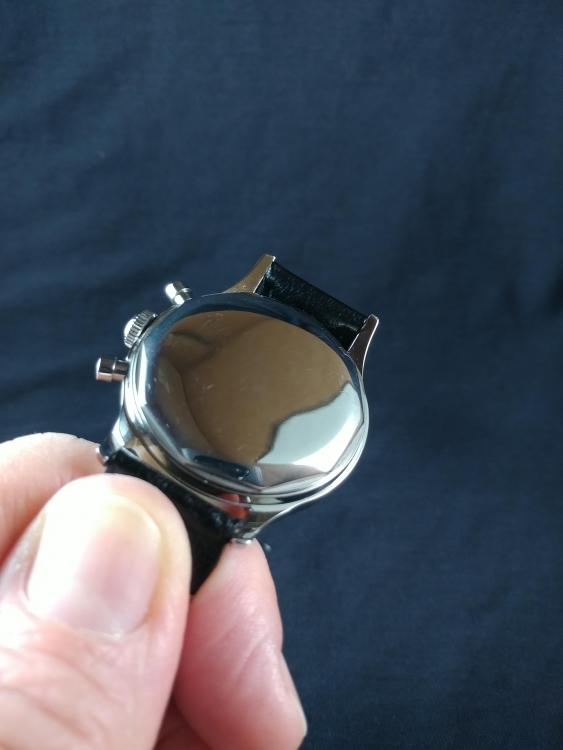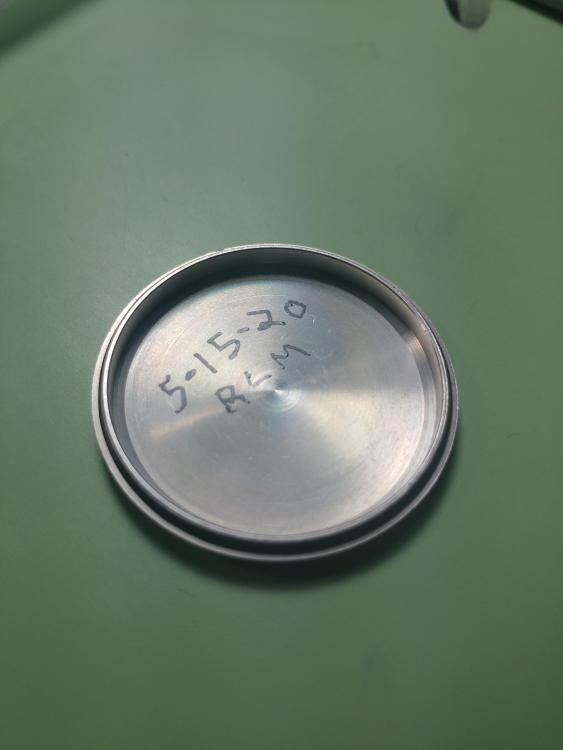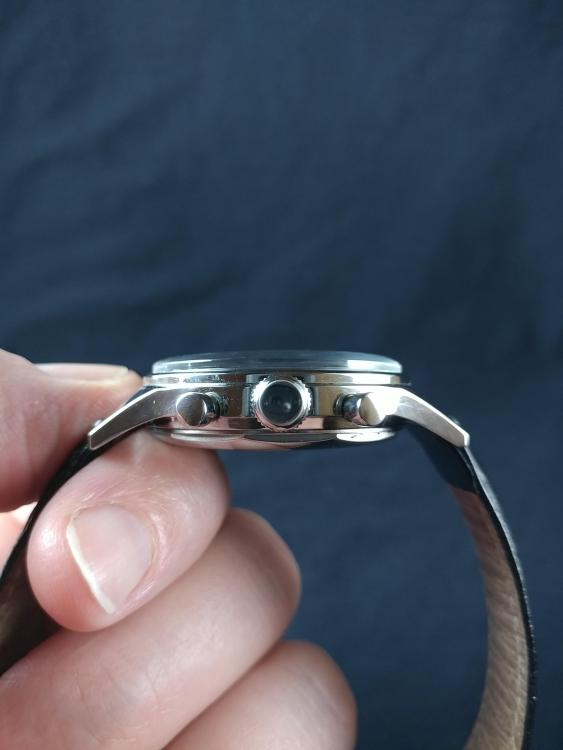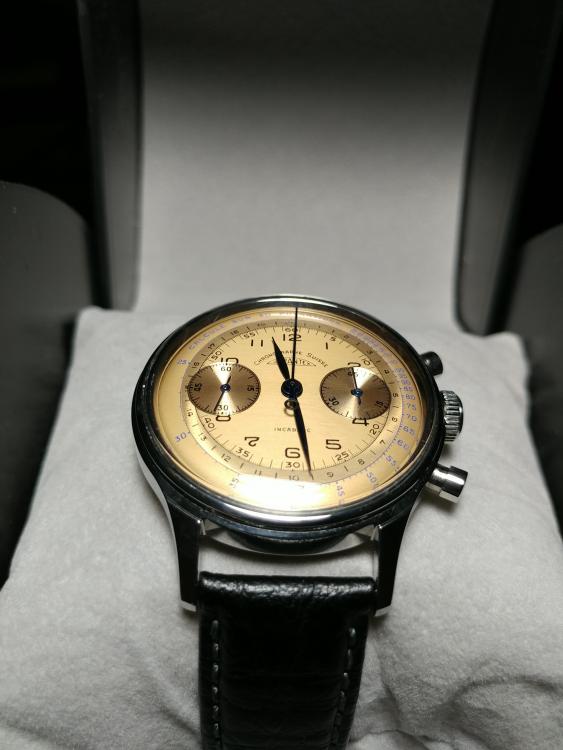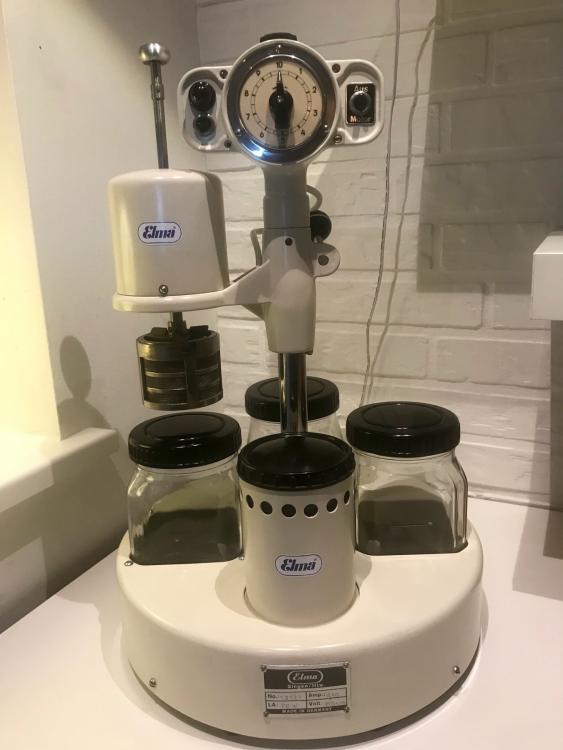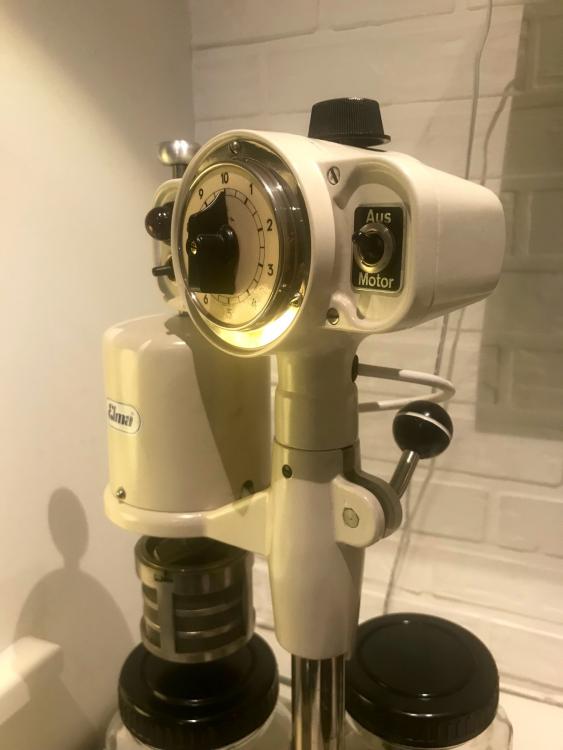Leaderboard
Popular Content
Showing content with the highest reputation on 06/03/20 in Posts
-
Loctite blue seems to be the most favourite by watch repairers. I never ever used any type of glue. If the button came away from the stem, it would be the inside thread in the button had worn, or some wear to the thread of the stem or both. So I would replace, what ever was needed.2 points
-
I think that just tells that they weren't rich enough, and got quickly bored of the toy when the speed limit of 55 MPH, and is equally out of place at the racetrack. I had a friend that loved Ferrari, was wealthy but not rich, crashed his front engined thing at the track and got the monster bill. He then must have tought of saving on maintenance by opening his own Ferrari specialized shop, that was another mistake, the Italian mechanic he hired stuffed him somehow, before it was found that he was not legal to work in the US. Rich is not one that owns a $15K watch or a 1.5 Mil car or house, is one that can lose it and can laugh that off becase it doesn't make a dent to his fortune.2 points
-
Amazing is an understatement. Here is what I got accomplished last night... I got the entire motion works back together. It actually runs great. The oscillating weight spins nice and free. The mainspring barrel is only supported on one side, but it really doesn't seem to have any adverse side effects. Everything was mostly surface rust. I scrubbed everything with a bit of peg wood and it all came off. Any pitting was very shallow, just barely under the plating. I dug out a screw from an older junk Seiko I had to replace the missing bridge screw. I'll work on the keyless works and the day/date components tonight.2 points
-
2 points
-
I have a quartz clock which I bought more than 40 years ago. It cost me more than a weeks pocket money in those days. It's still running. It's still accurate to maybe 30 seconds a month. The newer clocks I have lasts about the life of 1 battery. And I just timed 1 yesterday. It was slow by 17 seconds per day. My 70 year old pendulum clock keeps better time than that. Over our lifetime, things have changed from "Made to last" to "Not made to last" and now we are in the era of "Made not to last." One of my friends who works for a mobile phone company said, "We are doing this for your own good. Or else we'll be surrounded with antiques. You wouldn't want to be using a Motorola brick would you?"2 points
-
The situation is not unique to watches of course. Years ago when the world was young, (and so was I) you could repair computers. In fact I made a good living doing this back in the day. You could also repair pretty much everything else, TVs, radios, watches, even kettles. Slowly we became more lazy and stuff got cheaper, so nobody bothered any more. Of course the true cost of never repairing anything is not fiscal. It is the cumulative and slow poisoning of our environment. We all rush around making money to buy stuff so we can show off our stuff, to the people we are working with who all buy stuff, and make money so they can buy stuff (rinse, repeat etc.) All the while this happened. I have to admit, having seen it, it is pretty impressive in a deeply depressing sort of a way. I grew up in sunny Scotland, and when I started my working life, there were fields on my way in to Glasgow from the leafy suburbs. There were also fields in the vicinity of Linlithgow, and even in the rural Scottish borders, much loved by the tourists (I believe they love the landscape, rather than the landfill). Over the course of my many miles and many years of driving round the country making money to feed my consumer habits, two smaller, but no less depressing mountains sprang up in those fields. These were the lesser garbage alps of Glasgow and Edinburgh. I shudder to think what all is in these stinking piles of crap. They are capped off with turf now, and lined with pipework to extract the methane from the decaying detritus, and will no doubt be there for many years to come. Other similar consumer driven pustules on the landscape have since taken their place as repositories for all of our discarded consumer crap. Of course a lot more of our waste (particularly dangerous or difficult to process stuff) was exported, and no doubt some of it may well be in the monstrous Delhi mega pile of festering garbage in the video above. With this in mind, it should indeed be illegal to sell stuff that cannot be repaired at reasonable cost, and easily recycled if it is beyond repair. That includes everything, from the humblest of wristwatch to the fanciest of Pateks. Luxury goods should not be exempt, or treated any differently, simply because they are "luxury".2 points
-
I have a major problem with vendor lock in. To my mind it is one of the most insidious aspects of human behaviour. A cynical move driven purely by greed. The simple fact is, there is absolutely nothing unique about a {insert name of manufacturer here} watch part. A gear is a gear, a spring is a spring, brass is brass, gold is gold. Even if you make your part out of unicorn droppings and elf sh*t, it is still a part at the end of the day. It is not some magic incantation that allows you to open someone else's wallet and help yourself to the contents, simply because your part forged from unicorn droppings failed. I am not advocating cloning or ripping off other peoples designs, I am simply stating that a part for a watch should be readily available at a reasonable price to anyone who needs it. This is of course not the way we have collectively decided to behave. We are constantly being reminded that were are mere consumers, and we have a duty to consume (apparently). Therefore, repairing stuff is anti-consumerist, and we should all be ashamed of ourselves for even thinking that we are worthy enough beings to be allowed to fix stuff. "Shut up and buy new stuff, and the hell with the planet" seems to be the mantra we are meant to be following.2 points
-
I own a Ford. At any time, I can go to a Ford spare parts store and buy any part for my car that I like. The spare part is always hugely overpriced, but I have every right to buy it. What I do with the part is entirely up to me. By law, Ford and other car manufacturers cannot deny me to buy spare parts. I have now visited various luxury watch brand sites and they all deny me to buy spare parts. That is, even if I own a genuine watch of a particular brand and I am in need of a spare part, I am denied buying it. All that’s offered is a service by an authorized repairer who will replace parts by their own whim, charging me way more than if I could have bought the part and done the job myself. At my own risk, of course! The way A.Lange & Söhne expresses it is typical: "Can I order spare parts or individual parts? The assembly and finishing of a Lange watch sometimes takes many weeks and, depending on the degree of complication, can only be carried out by a few watchmakers. Even improper opening of the watch can cause serious damage to the movement. Therefore, the overhaul or repair of a Lange watch may only be carried out by our service centre or by the few authorised service partners. Only they are therefore authorised to order the spare parts necessary for a repair." Basically, this is just BS. If I destroy my own watch, or my own car, it is my problem, not the problem of the manufacturer. For example, when I need to repair my car, my neighbour “all brands car repairer genius” tells me what original part to buy. I then bring the part to my repairer and he does the job. A job that I know is equally good or even better and less expensive than the job done by my Authorized Ford Workshop. Sure, a watch is likely a lot more complicated than a car, but there’s no reason a skilled independent watch repairer can’t do the job and do it just as well. If it is illegal for car brands to deny people to buy spare parts, then why not for watch brands? After all, it's my watch and it's my car, and the risk is on me!1 point
-
I use no loctite for pocket watch crowns and stems as the threads are big enough to have a good grip. For watches, the blue medium should do. Any other thoughts out there? Sent from my iPhone using Tapatalk Pro1 point
-
1 point
-
Oh right... that makes sense then. At least you've got a good idea it will work when you replace the barrel arbor and the mainspring, if that's what you intend to do. If you're going to keep it, I would definitely change the spring, for a new one with better amplitude, but that's just what I do for the sake of a tenner. It's a great looking watch! I love the classic 70's look to it.1 point
-
Jeez... can't believe that's the same watch! You've done a sterling job on it already. Seiko are pretty indestructible by the looks of this one. They stopped making these in 1976, so it's got some age to it as well as the water ingress/rust issue. So you still need another barrel arbor, or am I missing something? How would it run without an arbor? Or are you giving it a wiggle to see the balance spin?1 point
-
I have a link below where you can look at pictures of what it's supposed to look like and get a clue of pricing which of course does not apply to this watch at all. https://www.chrono24.com/zenith/el-primero--mod192.htm1 point
-
If you want an opinion I agree with nickelsilver, and don't pay anything or a symbolic sum just for fun. Atleast there will be lots of parts for it but not from any swiss manufacurer1 point
-
It's amazing what can be done with something that appears to be a lost cause. Surprising how that barrel arbor got so eaten away. I suppose because it was steel and not an alloy or brass1 point
-
You are right VW. In most cases the rich care about the bling and how many diamonds and can everybody see what adorns the wrist. For me a dress watch should be just that - Unassuming, functional and compliment the dress. I am not a fan of divers watches or any chronographs worn with an evening suit. Some like it, I guess it comes down to personal preference.1 point
-
For the rich money is never a problem so they simply don't care (that much).1 point
-
Patek and AP (and others to different extents) have restoration departments where they do use old hand powered lathes and such to do the work. It's definitely not what they are using to produce new pieces. As to the above reference about watchmakers making parts, there are some that do, and can make pretty much anything, but it always comes at a price. Something as common as a balance staff will almost certainly not be less than 250 for example, and the price goes up from there for more time consuming parts like pinions or wheels or escapement parts. This is simply because of the time involved, and doesn't count the years of experience and investment in specialized machines and tooling.1 point
-
Tapping guide prototype The Unimat 3 is so small that almost no regular tool or accessory fits, not even the micro tapping guide pictured above, so I made the below which allows to gain few precious centimeters. For now I have been reusing the shaft from the ready item, so it's not short as it could be. And I could not get to thread with my single tap set, so the cap will have to be held another way. But from my stash of about 5 there was a spring that is acceptable, so I'm happy with the result anyway.1 point
-
Correct. However not all the Swiss do marketing that way. Surely PP, AP, VC, and many others do, but Omega and Rolex do not. They all employ a large number of higly skilled workers, which is good. If you look the Breitiling video above at some point they show the room where the cases are cut, the hardening process, etc, teir product appeal is based more on the resound of precise machining than hand making. Then there are of course the few Masters really doing one piece at time with rose lathes and such, I was lucky to known one of them, Vincent Calabrese, a nice and humble person. And then tq are the ultra technologists, the like of Richard Mille, etc which nowaday make the most of Haute Horlogerie segment. It is a very diversified industry whith many connections to China where they produce a lot, but are still able to lable Swiss Made thanks to their laws. The only thing they all have in common is that they make unnecessary luxury items, pulling good profits (but not all) and are able to make buyers drool and repairers irate. Also we must remember that Switzerland makes all the tools to make watch and many precision devices. In the US, an accurate big industrial lathe is called Swiss turns. Whatever your opinion Switzerland deserves a lot of credit when it comes to the economy and other things too.1 point
-
For some reason people have been brainwashed with the concept that if something is extremely expensive then it is a quality product. The fact that something expensive is a quality product may or may not be true. My background was manufacturing engineering and I have had a lifetime career looking at the way things are made. Once I began to look at watches as a hobby and began examining them under a microscope I was able to see similarities in the way the internal parts were manufactured. There are some watches produced in small quantities by cabinotiers like Philip De Fore, Roger Smith, Vianney Halter, Roland Murphy and a few others that are made in small batches that hob the gears and cut out most of the other parts in small batches. There also large designer label watch factories that use high production stamping and machining equipment to turn out large quantities of watches. from 26,000 to 100,000 watches a year. When you carefully examine the internal watch components with a microscope you can see the tell tale marks on the side of the parts that show they came from either a stamping press or a wire EDM machine. They are marketed as high end luxury items and imply that they are "hand made" by skilled watchmakers. In truth, they are mass produced watches, produced by production workers, made the same way other mass produced watches are made. There is a video made by Patek Philippe showing a guy making a pivot on a Jacot Lathe and pointing out that it takes him many hours to turn a pivot. Do they seriously want you the believe that this guy is going to turn 40,000+ watch pivots a year. They and the other Swiss companies make a good watch but the gears are stamped the same way, the watch faces are printed on pad presses the same way and the cylindrical parts are turned the same way on high production coil fed CNC lathes. In the end the customer is purchasing an expensive mass produced watch with a designer label name printed on the face. This does not mean that the customer is not getting a good watch. It just means they are paying a lot of money for a mass produced product thinking that it isn't. david1 point
-
Your dentist should be quite used to that. Many of our premium dental equipment from a certain country in Europe that produces watches, have learnt to impose ridiculous conditions in their warranties. If you don't follow their maintenance protocol, if you use a competitor's product in their machine, they retain their rights to void their warranty. Now with the Covid-19 panic, many companies are putting out infection control equipment that have not been tested and proven effective. I just bought one such equipment due to industry and peer pressure. If you follow the company's maintenance protocol, the cost of the spare parts for just 1 year would come to the price of a new machine. Ridiculous!1 point
-
Hi the regulation and the beat error adjustment are separate adjustments. I have attached the 2824-2 tech sheet for you the whole 16 pages of it . read and enjoy cheers 29_ETA2801.2-ETA2836.2 (6).pdf1 point
-
I just noticed the price tag there. $24.95 1958 dollars in 2020 dollars is only about $221! I'm pretty sure the entry point for Omega these days is 10X that. If I could buy a brand new Omega like that for $221, I'd be all over it. Definitely illustrates the mechanical watch industry's move upmarket post-QC. I've got the majority of a 1958 German market VW Beetle in my shop, and used to have a '57 Karmann Ghia (google "57 karmann ghia" and look at the images, mine is currently the 4th result in my browser; black and white with a faint hint of green and Texas plates with trees in the background). They were hardly expensive cars, even in their day, but at $1,545 (2020$13,706) and $2,395 (2020$21,852) things just cost more these days... You can't call it inflation either, because that's the exact transformation that's being represented. I feel like there's some deeper revelation to be had here, but my coffee hasn't kicked in yet.1 point
-
Your dentist experienced something similar to the luxury item warranty scam! A luxury item has an obligatory service interval in order to maintain a warranty. If you do not follow it, your factory warranty is null and void. They do this with super cars like Ferrari, Lamborghini and the like. As an example, if you were to purchase a Bugatti Veyron ($2,000,000+) it has an annual warranty service cost of $20,000 and you are required to purchase new rims and tires every 2500 miles to the tune of $42,000 for the set. If you skip any scheduled service or you do not replace your tires at the specified interval, Bugatti will cancel your warranty and you are responsible for the full cost of any repairs. God help you if you get in an accident in one of these carbon fiber body super cars. I saw a Ferrari, La Ferrari that had a fist sized damage to a sill plate on the drivers side, ferrari flew in a specialist who repaired it to the tune of nearly $200,000!1 point
-
1 point
-
V Watchie My dentist owns an expensive watch and needed to have it cleaned and oiled. The factory authorized service center told him the cost would be $1750.00 and would take six months...It is obviously a racket and anybody thinking about purchasing one of these watches needs to carefully examine the consequences of getting ripped off. The watch factories can get away with this scam by refusing to sell replacement parts. This does not mean that mechanical watches cannot be restored or repaired. With study, practice and the proper equipment, watch parts can be made. Clocks are repaired this way and if you watch the Steffen Pahlow videos on YouTube you can see that it is possible to do this with watches as well. This book, called the WISCONSIN SCHOOL OF WATCH REPAIR, was published at a time when watch parts could not be purchased and had to be made by the watchmaker. It goes into great detail about making parts for watches. david1 point
-
1 point
-
This of course is the nub of the matter. We are being sold this idea that "quality" is an optional extra, and that if you buy a "quality" watch, you need to pay through the nose to have it serviced and repaired. Quality I assure you is not optional. As has been stated more than once on this forum, If you buy cheap then you can expect to buy twice, however what galls me is that often what passes for quality is simply bling. I have a petrol lawn mower that is still running after the best part of 20 year. This is no accident. When I bought it, I looked at all of the machines on offer, and chose the most robust one I could afford. What will finally kill it is not the motor, but the weather. It is made from steel, and steel doesn't last in this cold wet and windy part of the world. Even though the machine has always been stored out of the weather, it is in an unheated shed, where condensation leads to rust, no matter how well you clean the thing prior to storage. It also gets subjected to flying rocks, spun up by the blades and the constant abrasive and damp conditions caused by chopping up vegetation and soil. I expect it to fail ultimately, and sure enough it now has a few rust holes in the metal skirt. I give it maybe another five years before it becomes unserviceable simply because there is not enough metal to hold it safely together. I have repaired it several times. The carb has been rebuilt, the blades sharpened, the clutch and fan cleaned out, the pull start cable repaired and so forth. This is because it is repairable, and the parts are available. I looked at the replacement machines available today for around the equivalent cost as this one 20 years ago. They look however much cheaper. More flimsy plastic bits, more go faster stripes, more marketing b*llox and less quality. I don't expect to get as robust a machine now as I did even then. This despite all of the "greenwashing" that the manufacturers are splurging on their advertising. I also looked at a "Robot" mower. This thing trundles round your lawn and cuts it apparently, thus saving you from one of the few forms of light exercise still pressing on your precious time. No doubt while it is trundling round the lawn rapidly heading towards its first breakdown, you can think of at least a dozen excuses to not to use the time it has freed up, to not go to the gym. It costs five times as much as the equivalent of my current mower. It has bluetooth and wifi, and an app, and is made of marketing w*nkery and other flimsy crap. So that means you need to spend five times as long doing whatever task it is that brings in the pay-check as you would if you simply bought a decent mower and used it to cut some grass. Actually for that money, if you are really lazy or unable to do it yourself. you could pay someone to cut the grass, but that is not what a "Robot" lawn mower is for. It is not there to cut the grass, it is there to say "I can afford a Robot lawn mower, 'aint it smart, and 'aint I the bees knees". Arguably that is also true of most of our toys of course. Was I tempted to buy a "Robot mower"... of course I was. I'm only human after all.1 point
-
Again, excellent post Andy! I am old enough to remember that it was a matter of course to try and repair everything that was broken if possible. My impression is that most of what was created up to about the 1950s was intended to last and be used for as long as possible. My father, who is now over 80 (he was very young when I was born) was a craftsman and when he was educated, quality meant everything, not least to his professional pride. The work itself and the development of the skill made life meaningful. He simply cannot understand the modern world where money means everything and quality almost nothing. It's really sad! If we could go back to focusing on creating real values instead of money, probably all environmental issues would end, and I think we would be much happier. Unfortunately, it will not happen because too many of us are greedy and as you put it, lazy.1 point
-
Perhaps, but if we don't call out these restrictive practices when we find them, we have simply given in to the bullying tactics. I agree that trying to put the bell on this particular cat may not be the world's top priority, but none the less we cannot simply ignore the problem either.1 point
-
1 point
-
Here’s a few photos of why I sometimes resort to. Movement is taken from an Omega which would be worth around £6k in good condition, so I’m trying to conserve it as best as possible. I’ve used a plastic rod to apply a droplet of “rust remover” acid, a little bit like you would apply oil with an oiler. This produces a black sludge over a few hours which is removed and then the process is repeated.1 point
-
1 point
-
1 point






